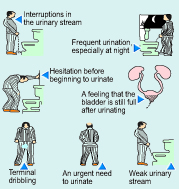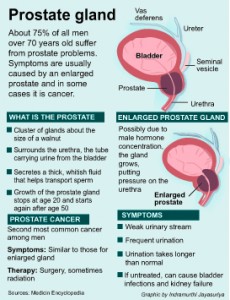Don’t dismiss those signs below the belt
 A “hit” below the belt of a man is often an early indication of serious issues elsewhere in the body.
A “hit” below the belt of a man is often an early indication of serious issues elsewhere in the body.
The smallest blood vessels are found in the male genitalia and certain diseases linked to them are a clear danger signal of worse to come in other parts of the body including the heart and the brain which are vital for the very survival of man, stresses Consultant Urologist Dr. Anura Wijewardene.
The importance of diseases linked to male genitalia being a precursor of other serious illnesses will be among the many topics that will be discussed and debated during the academic sessions of the College of Urological Surgeons of Sri Lanka from November 7-10.
Dr. Wijewardene details the four early warning signs from male genitalia that need to be heeded as kidney stones, benign prostatic hyperplasia, prostate cancer and erectile dysfunction.
If anyone seeks help for one of these conditions, the Urological Surgeons need to think immediately about something being wrong with that person’s metabolism, which may be a hidden factor, the Sunday Times understands.
For metabolic syndrome and its five traits obesity, diabetes, high ‘bad’ cholesterol, low ‘good’ cholesterol and hypertension could easily pave the way for killers such as heart disease and stroke, stresses Dr. Wijewardene.
With ‘metabolic’ being the biochemical processes needed for the functioning of the human body, metabolic syndrome is a group of risk factors that raise the likelihood of a person developing a disease, it is learnt.
Referring to stones in the urinary tract or urolithiasis as well as in the kidneys, a high incidence of which is seen in Sri Lanka, he says such stones could be a harbinger of metabolic syndrome and its five traits. Several research studies have associated metabolic syndrome and its five traits with a significantly increased risk of kidney stones, with findings pointing to the augmentation of the propensity for uric-acid stone formation.
“Those who are overweight, especially with fat around the tummy or have diabetes have been found to pass highly acidic urine which in turn leads to the development of uric-acid kidney stones,” he said, adding that these stones are more difficult to diagnose than other types because they do not show up on abdominal X-rays. Undiagnosed, they continue to grow bigger.
Therefore, kidney stones, which present symptoms such as terrible pain in the flank or abdomen that spreads to the groin may very well be an indicator of other serious issues, he says.
Even if there is only a single-stone obstruction, it is advisable to investigate for multiple stones as it is an indication that the metabolism is deranged. Complications too arise faster with the obstruction of the urinary tract causing severe ureteric colic or urinary sepsis which could lead to the destruction of the kidneys. “Severe urinary sepsis is an emergency needing immediate surgical intervention,” he stresses.
 Another warning of everything not being right could be benign prostatic hyperplasia, the commonest prostate condition to which many men are vulnerable after middle age, and prostate cancer, the Sunday Times learns.
Another warning of everything not being right could be benign prostatic hyperplasia, the commonest prostate condition to which many men are vulnerable after middle age, and prostate cancer, the Sunday Times learns.
Zeroing in on cell growth in the human body, Dr. Wijewardene points out that usually they grow or multiply only when there is a requirement, but sometimes this system goes awry, leading to uncontrolled cell growth resulting in a tumour. “This tumour may be malignant if it is able to invade other healthy tissue.”
The direct cause of both benign prostatic hyperplasia and prostate cancer is unknown, says this Urological Surgeon, but an imbalance in the male hormone, testosterone, gives rise to them. However, the increased insulin level common in metabolic syndrome seems to spur prostatic inflammation and in turn promote both these conditions.
Benign prostatic hyperplasia caused by the non-malignant growth of the prostate gland is prevalent among older men, says Dr. Wijewardene, pointing out that in severe cases it could cause sepsis, irreversible bladder damage and renal failure.
The risk of prostate cancer, which is slow-growing at times, meanwhile, also increases with advancing age, it is learnt.
Both benign prostatic hyperplasia and prostate cancer have similar symptoms and have an impact on the passing of urine. (Please see graphic).
A hush-hush topic among men, erectile dysfunction or ‘castration syndrome’ is now also being linked closely to metabolic syndrome, says Dr. Wijewardene. Insulin resistance linked to metabolic syndrome is believed to have an impact on the ability to get an erection.
Explaining that the ability to achieve and sustain an erection is dependent on a complex interaction of sensory information, nerves, blood vessels, hormones and emotions, he says that vascular tissue in the penis needs to fill with blood after the nerves have carried sexual stimulation from the brain.
While metabolic syndrome may be launching a full frontal assault on the male genitalia in the form of erectile dysfunction, this may also be sending a clear signal that the person’s heart health is at stake, he emphasises, saying that it is vital to see it as an early warning of atherosclerotic disease (where an artery wall thickens due to the piling up of cholesterol) and take urgent preventive measures.
Calling metabolic syndrome “the plague of modern times”, Dr. Wijewardene adds that when someone comes with a problem below the belt, it is a must to look above it as well.
Follow @timesonlinelk
comments powered by Disqus






















